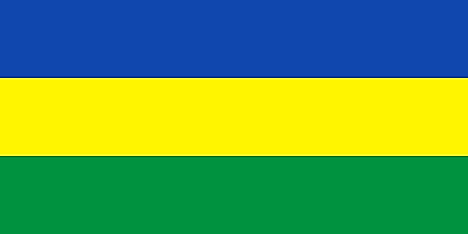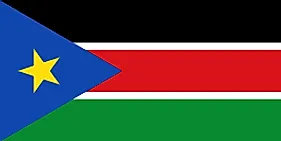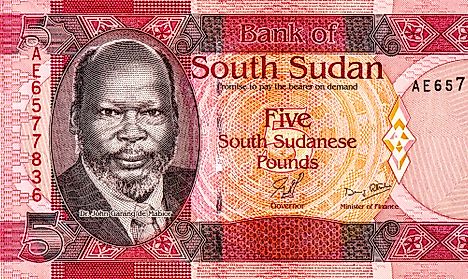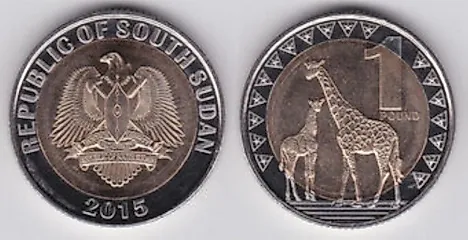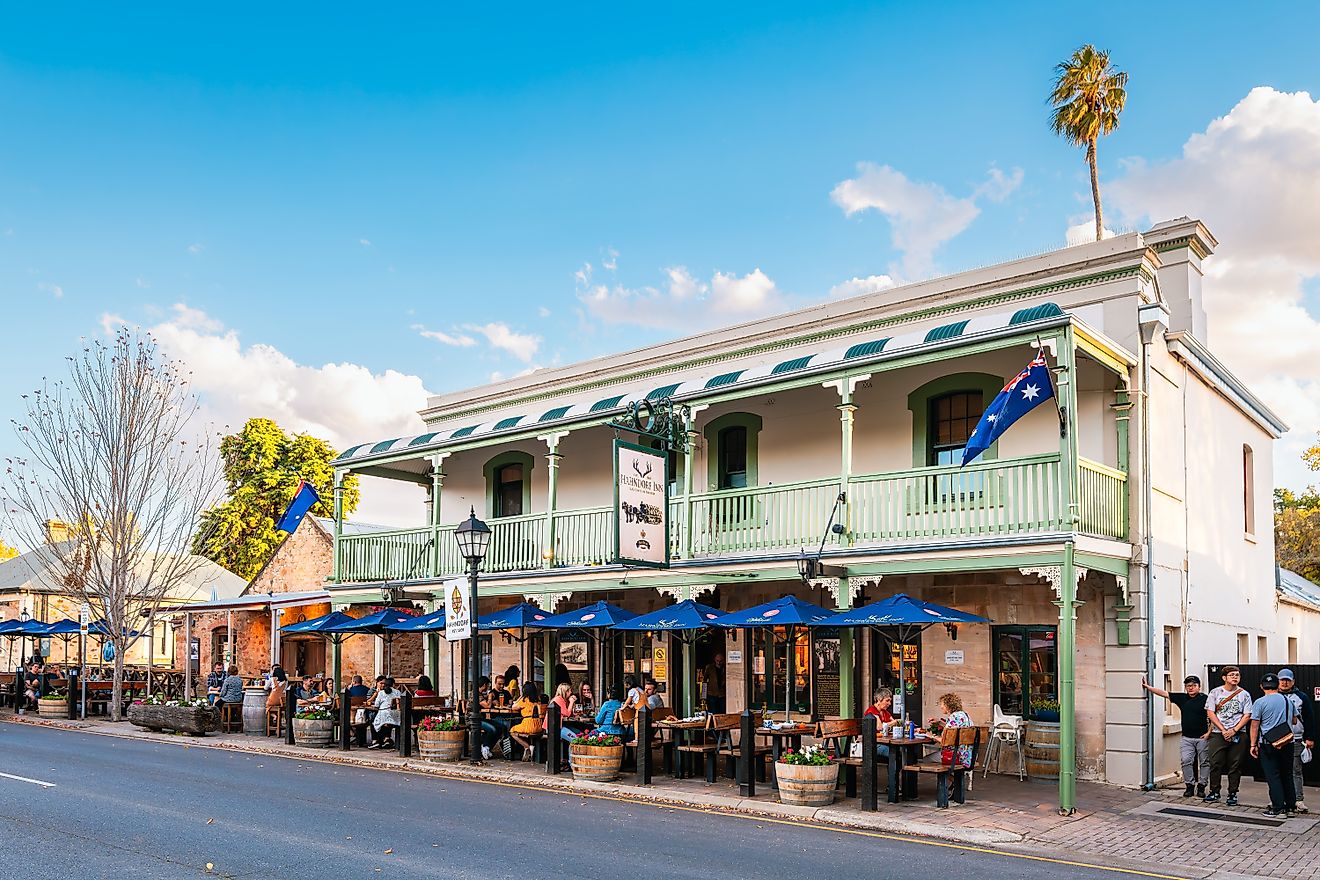Flags, Symbols & Currency of South Sudan
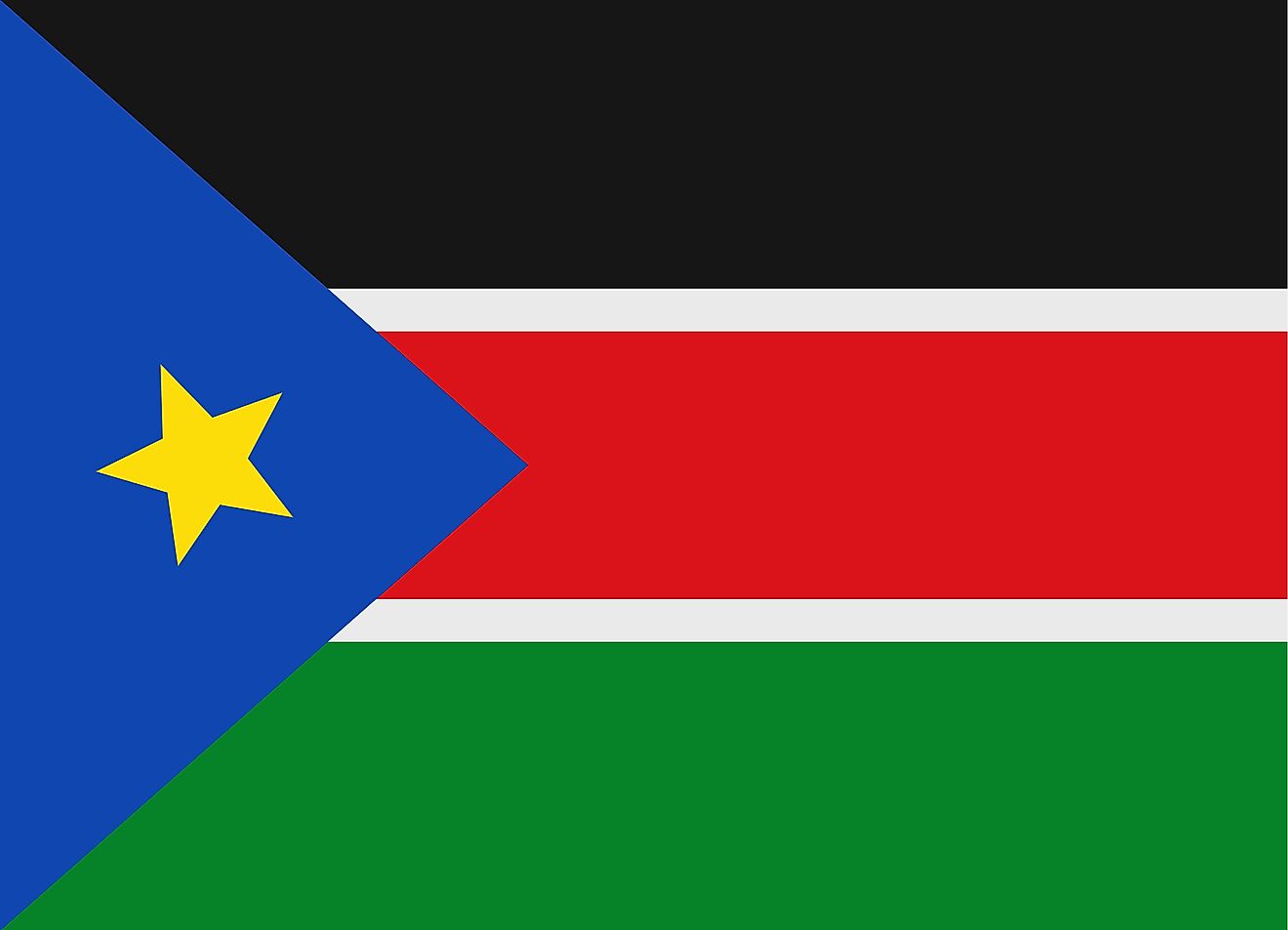
The National Flag of South Sudan was officially adopted on July 9, 2005.
The National Flag of South Sudan featured three equal horizontal bands of black (top), red, and green. The red band is edged in white and a blue isosceles triangle is based on the hoist side of the flag containing a gold, five-pointed star. The black color represents the African ancestry of the people of South Sudan. The red color symbolizes the bloodshed by the martyrs in the struggle for independence. The white lines are a celebration of peace and goodwill after many years of the liberation struggle. The green color represents agriculture, natural resources, forests and is also a symbol of progress. The blue color of the triangle represents the waters of the River Nile, which is a source of life and sustenance for the entire nation. The gold star represents the unity of the states making up South Sudan and the determination and hope for all. The national flag is embraced and used by the citizens of South Sudan as a symbol of national unity. The flag has a width-to-length proportion ratio of 1:2.
History of the Flag of South Sudan
The British and the Egyptians who had jointly ruled over Sudan had arranged for the local national symbols of Sudan for their representation on the national flag. After Sudan gained independence on January 1, 1956, the Christians living in the southern part of the country had no regional symbols. However, the people living in the northern part of the country having Islam as their dominant religion, had their Islamic symbols on the then national flag. As a result, the southerners (Christians) always felt discriminated over the years. These discriminatory acts led to a bloody civil war that lasted for many years between the two regions until 2005 when a referendum was conducted to set the south independent. After the signing of the peace agreement to end the long civil war in Sudan, the flag initially used by the Sudan People's Liberation Movement was officially adopted as the national flag on July 9, 2005, prior to the country's independence in 2011.
Symbols of South Sudan
The National Coat of Arms of South Sudan
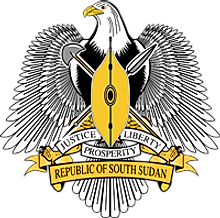
The National Coat of Arms of South Sudan was officially adopted in 2011. It features an African Fish Eagle with open wings, bearing a gold shield and two crossed spears placed behind the shield. The eagle is seen facing its right side and symbolizes strength, resilience and vision, while the shield, and the spears, represent protection of the new sovereign state and the hard work by the people to feed it. The eagle holds a scroll in its claws that displays the name of the country: Republic of South Sudan and the national motto: “Justice, Liberty, Prosperity”.
National Motto
"Justice, Liberty, Prosperity"
National Anthem
- Anthem Title: "South Sudan Oyee!"
- Music Composer: students and teachers of the Music Department of the University of Juba
- Lyricist: Unknown
- Date of Adoption: July 9, 2011
"South Sudan Oyee!" is the national anthem of South Sudan. The music of the anthem have been composed by the students and teachers of the Music Department of the University of Juba. The lyricist of the anthem is however unknown. The anthem was officially adopted on July 9, 2011.
"South Sudan Oyee!"
Oh God
We praise and glorify You
For Your grace on South Sudan,
Land of great abundance
Uphold us united in peace and harmony.
Oh Motherland
We rise raising flag with the guiding star
And singing songs of freedom with joy;
For justice, liberty and prosperity
Shall forever more reign!
Oh great patriots
Let us stand up in silence and respect,
Saluting our martyrs whose blood
Cemented our national foundation,
We vow to protect our nation.
Oh God, bless South Sudan!
The Currency of South Sudan is the South Sudanese pound
The current official currency of South Sudan is the South Sudanese pound. It is divided into 100 units called piasters and was approved during the July18, 2011 secession upon approval by the legislative assembly of South Sudan.
Coins
The coins were introduced during Independence Day and circulation began on 9 July 2015 as the country marked its fourth Independence Day. The coin consists of an engraved image of the first president of South Sudan, Salva Kiir. The issued coins include 5, 10, 25, 50, 1 piasters and 1 pound.
Banknotes
The South Sudanese pound note features the image of John Garang, who was the leader of the rebel movement from the south. The banknotes include 6 different denominations in the form of pounds and another 5 denominations in the form of piasters. The highest banknote is 100 pounds, while the least is that of 1 pound. Other banknotes include 5-, 10-, 25- and 50-pounds. The piaster notes were printed by the South African firm, De la Rue.
The 1 Pound banknote has since been replaced by 1 Pound coin as part of reducing the confusion in currency and to ease transactions. With the introduction of the new low-value piaster notes, the 50-piaster denomination note was dropped in preference to the coin currency. Later, in October 2011, some of the piaster coins were replaced with banknotes of 25, 10 and 5 piasters. The 25 South Sudanese pound note was replaced by the 20-pound note in 2016 and issued by the Bank of South Sudan.
